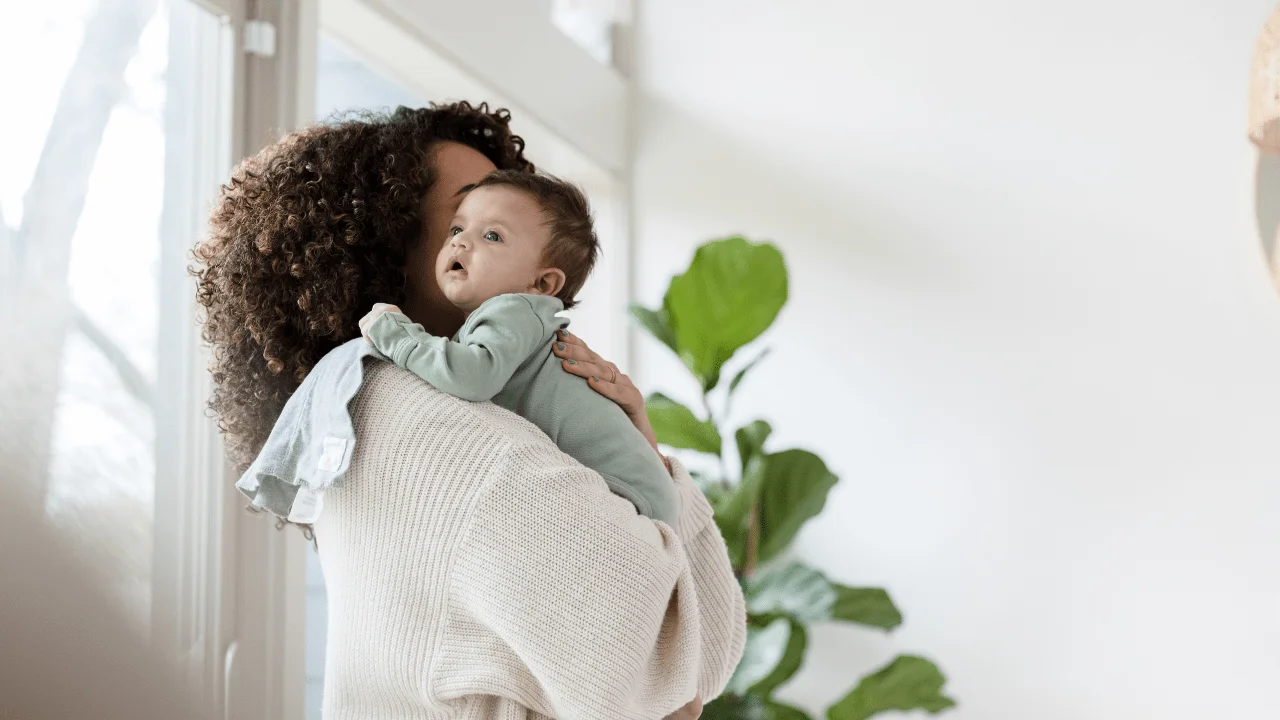
ለምንድነው ህጻናት ያብባሉ?
የሕፃን እብጠቶች ቆንጆ ናቸው - እና ዓላማን ያገለግላሉ. የፒንት-መጠን መቆንጠጫዎች በልጅዎ ሆድ ውስጥ የታሰረ አየር ይለቃሉ, ይህም የበለጠ ምቾት እና ግርዶሽ ያደርገዋል. ማቃጠል እንዲሁም በልጅዎ ሆድ ውስጥ እንዲቀመጥ እና ረዘም ላለ ጊዜ እንዲመገብ የሚያስችል ቦታ ያስለቅቃል።
ማቃጠል (ከትንሽ፣ ብዙ ጊዜ ከሚመገቡት ምግቦች ጋር) እንዲሁም ብዙ ጊዜ ለሚተፉ ወይም የህመም ምልክቶች ላለባቸው ሕፃናት ጠቃሚ ሊሆን ይችላል። የጨጓራ እጢ በሽታ (GERD).
ያም ማለት ከእያንዳንዱ አመጋገብ በኋላ ህጻናት መቧጠጥ ያለባቸው ህግ የለም. አንዳንድ ሕፃናት ብዙ መቧጠጥ ያስፈልጋቸዋል, ሌሎች ደግሞ እምብዛም አያደርጉም.
በአጠቃላይ፣ ጡት ያጠቡ ሕፃናት እንደ ማሸት ብዙ አያስፈልግም በጡጦ የተጠቡ ሕፃናት ምክንያቱም በሚመገቡበት ጊዜ ትንሽ አየር የመዋጥ ዝንባሌ አላቸው። ነገር ግን እያንዳንዱ ልጅ የተለየ ነው, ስለዚህ የልጅዎን ምልክቶች ይከተሉ.
ጡጦ እየመገቡ ከሆኑ የተወሰኑ የጠርሙሶች ዓይነቶች ህጻንዎ ትንሽ አየር እንዲውጥ እና የመቧጨርን ፍላጎት እንዲቀንስ እንደሚረዱት ሊገነዘቡ ይችላሉ።
ህጻናት መቼ መታጠፍ አለባቸው?
ልጅዎ በሚመግብበት ጊዜ የማይመች መስሎ ከታየ፣ ከረጨ፣ ወይም ከቦታው ጎትቶ ማልቀስ ከጀመረ፣ ድፍረትን ይሞክሩ። ጥሩው ስልት ጡጦ እየመገቡ ከሆነ ከእያንዳንዱ 2 ወይም 3 አውንስ በኋላ እረፍት መውሰድ ወይም እርስዎ እያጠቡ ከሆነ ልጅዎ ጡት ሲቀይር። (ልጃችሁ የረካ መስሎ ከታየች ወይም በምግቡ ወቅት ወይም በኋላ ተኝታ ከወደቀች ለመምታት አይቸገሩ።)
ብዙ ሕፃናት ከ 4 እስከ 6 ወር ባለው ጊዜ ውስጥ የመቧጨር ፍላጎትን ያሻሽላሉ, ምክንያቱም የበለጠ ቀልጣፋ ተመጋቢዎች ስለሚሆኑ ብዙ አየር አይውጡም.
ሕፃኑን ለመቦርቦር ሦስት መንገዶች
ሥራውን ለማከናወን ከአንድ በላይ መንገዶች አሉ። ሊሞክሯቸው የሚችሏቸው ሶስት የተለያዩ የመቧጨር ዘዴዎች እዚህ አሉ። ለእርስዎ እና ለልጅዎ በጣም ምቹ እና ውጤታማ የሆነውን ለማግኘት ይሞክሩ።
በደረትዎ ወይም በትከሻዎ ላይ
- ልብሶችዎን ከትፋት ለመከላከል በትከሻዎ ላይ (እንዲያውም ከጀርባዎ በታች) ጨርቅ ያድርጉ።
- አገጩ በትከሻዎ ላይ እንዲያርፍ ልጅዎን በደረትዎ ላይ ይያዙት።
- በአንድ እጇ ደግፏት እና በእርጋታ ይንፏት ወይም በሌላኛው ጀርባዋን ያሻት.
ወይም ልጅዎ ብዙ የጭንቅላት እና የአንገት መቆጣጠሪያ ሲኖረው ይህንን እንደ አማራጭ ይሞክሩት።
- ልጅዎን ወደ ትከሻዎ ከፍ አድርገው ይያዙት - ትከሻዎ በሆዷ ላይ በትንሹ እንዲጭን እና ይህም ግርዶሹን የሚያስወጣ ለስላሳ ግፊት ይፈጥራል.
- በአንድ እጇ ደግፏት እና በእርጋታ ይንፏት ወይም በሌላኛው ጀርባዋን ያሻት.
- ልጅዎ በምቾት መተንፈስ እንደሚችል እና በጣም ርቆ እንደማይወድቅ ያረጋግጡ። የጭንቅላቷን አቀማመጥ ለመፈተሽ በፍጥነት በመስታወት ውስጥ ማየት ጠቃሚ ሊሆን ይችላል።
በጭንዎ ላይ መቀመጥ
- ማንኛውንም ምራቅ ለመያዝ በልጅዎ ላይ የጨርቅ ማስቀመጫ ያድርጉ ወይም ጭንዎ ላይ ጨርቅ ያድርጉ።
- ከእርስዎ ራቅ ብለው ልጅዎን በጭንዎ ላይ ያስቀምጡት.
- ሰውነቱን ለመደገፍ አንድ እጅን ይጠቀሙ ፣ የእጅዎ መዳፍ ደረቱን ይደግፋል ፣ ጣቶችዎ አገጩን እና መንጋጋውን በቀስታ ይደግፋሉ። (ጣቶችዎን በጉሮሮው ላይ እንዳያደርጉት ያረጋግጡ።)
- ልጅዎን በትንሹ ወደ ፊት ዘንበል ያድርጉ እና በሌላኛው እጅዎ ጀርባውን በቀስታ ይንኩት ወይም ያሹት።
በጭንዎ ላይ ወደ ታች ፊት ለፊት
- ማንኛውንም ምራቅ ለመያዝ በጭንዎ ላይ ጨርቅ ያድርጉ።
- ልጅዎን ወደ ሰውነትዎ ቀጥ ብሎ በጉልበቶችዎ ላይ እንዲተኛ ፊትዎን በእግርዎ ላይ ያድርጉት።
- አገጯን እና መንጋጋዋን በአንድ እጅ ደግፏት። የልጅዎ ጭንቅላት ከሌላው ሰውነቷ ያነሰ አለመሆኑን ያረጋግጡ ስለዚህ ደም ወደ ጭንቅላቷ አይቸኩልም.
- በሌላኛው እጇ ጀርባዋን ፓት ወይም አሻሸ።
ማስታወሻ፡- ከጥቂት ደቂቃዎች በኋላ ብጉር ካላገኙ የተለየ ቦታ ይሞክሩ. ያ ካልሰራ, ማቆም ጥሩ ነው - ልጅዎ መቧጠጥ ላያስፈልገው ይችላል.
ተጨማሪ ያንብቡ


አስተያየት ጨምር